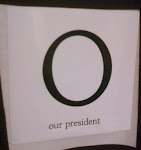Waller (1937, 1938), writing in the 1930s after examining patterns of dating
among college students, observed that social status and stratification
heavily influenced dating relationships. The principle of least interest evolved
from his observations that romantic partners usually proceeded at different
paces in their emotional involvement with one another. He argued that if the
differences in involvement became too large, the less interested partner would
be in a position to exploit the other (Waller, 1938). The principle of least
interest predicts, more specifically, “that person is able to dictate the conditions
of association whose interest in the continuation of the affair is the
least” (Waller, 1938, p. 275). Waller acknowledged various sources for the
principle of least interest, including the French epigram cited above. Waller
also gave credit to Edward Ross (1921, 1930) who, in an early sociology textbook,
observed that in a variety of social relationships, the person who cares
less can exploit the person who cares more.
Waller further argued that unequally involved relationships were not
healthy in the long term. A significant gap in emotional involvement could
lead to a situation of one partner taking the other for granted, or an even more
extreme situation of exploitation. When relationships of this type result in
marriage, the results were expected to be unsatisfactory (Waller, 1938). This
suggests that it might be better if romantic relationships with unequal emotional
involvement dissolve before getting to the point of marriage. Longterm
outcomes for romantic couples with unequal emotional involvement,
however, rarely have been examined.
In discussing the principle of least interest,Waller referred specifically to the
commonality of unbalanced emotional involvement and its implications for differential
interest in the continuation of the relationship. In this research, we
operationalize the principle of least interest as relative emotional involvement
and do so by assessing both partners’ perceptions of which partner is more
2 Journal of Family Issues emotionally involved in the relationship. According to Berscheid’s (1983) theory of emotion, emotion is experienced in relationships because of interdependence and interruptions in interdependence. In more highly interdependent relationships, there are more opportunities for emotions to be experienced. However, one partner may be more emotionally invested than the other (i.e., this partner may have greater potential than the other to experience emotions in the context of the relationship and be the partner with more interest in the relationship).
~ From The Principle of Least Interest: Inequality in Emotional Involvement in Romantic Relationships
Subscribe to:
Post Comments (Atom)




1 comment:
Waller was exactly right.
Post a Comment